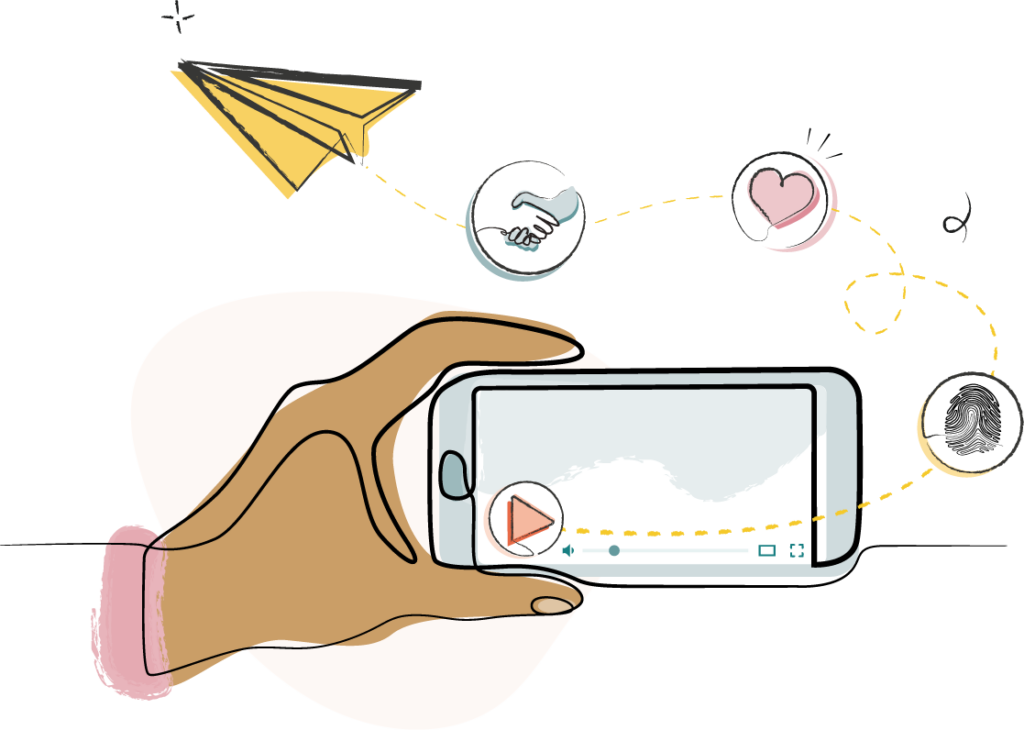Judie Russell
I often ask professionals why they aren’t making videos. The most common response is that ‘there isn’t enough time’, and that’s often more true for portfolio professionals who are juggling a myriad of projects and clients. But what if I told you that a brilliantly crafted video could save you time in the long term?
People love visual content. In fact, 73% of users surveyed by Wyzowl said they prefer to watch a short video over reading an article or crawling through a website for answers. Just think about how often you’re scrolling through your social media feed and a powerful video catches your eye. Good visual content is memorable, which is so important when it comes to your personal brand.

So, the question we should be asking, really, is: Do you have the time to NOT make videos? In case you’re still not convinced, here are a few more reasons why you should be investing in videos for your personal brand.
1. It will help your audience get to know you better
The mere-exposure effect is a psychological phenomenon by which people tend to develop a preference for things merely because they’re familiar with them. You don’t have enough time in the day to meet all your potential clients and help them get to know you better, but by regularly sharing videos about yourself and your business on social media, viewers will become more familiar with you and potentially develop a preference towards working with you.
2. You can use videos to answer frequently asked questions
Think about the most common questions you get asked about your services or your mission. How often do you have to answer those same questions over email or on a client call? Wouldn’t it be easier if you had a video that did that for you? I often get messages asking for webcam advice. Instead of replying with a lengthy email, I send them this video link. That has saved me countless hours, which can be applied elsewhere in my portfolio career.

Anyone can access these videos, any time of day and from anywhere in the world. If they’re answering common questions or pain points, they could bring in a lot of free search engine traffic. It also means you can focus your time on what’s most important to your business, instead of spending time on repetitive communications.
3. Your efforts will start compounding
According to the same Wyzowl report, 86% of businesses currently use video as a marketing tool – and that’s because it works. The businesses and portfolio professionals who have already started creating videos have a competitive edge as they are building up their visual libraries, learning video production skills and becoming more confident presenters. The sooner you begin, the more you’ll notice small efforts turning into big victories.
But surely creating videos is difficult and expensive, right?
Wrong. A few years ago, I would have agreed with both of these statements, but times have changed. Let’s take a moment to unpack both of these myths…
Myth 1: video production is too expensive
65 years ago, professional quality video recorders sold for around £40k. Today, you’re carrying around a better-quality camera and it’s built into your phone. You can make a DIY tripod out of household items (or purchase a cheap one on Amazon if you prefer) and just use the natural light from the sun by standing close to a window.
The only piece of equipment you really should buy is a microphone, and even that doesn’t have to be crazy expensive. My recommendation is the Rode Smart Lav+ and the Rode extension cable – both coming to around £70.
If you plan to edit videos yourself, then I suggest subscribing to Adobe Premiere Rush at around £9.99 per month. The rest comes down to efficient planning, but most of the videos I make don’t require any additional budget outside of the microphone and editing software.
Myth 2: creating videos is too difficult
A lot of people don’t know where to start when it comes to video production and they tend to think about everything all at once. This would overwhelm anyone. However, when you break the production process down into three separate phases with manageable chunks, then it all starts to become more achievable.

The three phases include
- Planning – Create a script and a list of shots you want to capture
- Filming – Bring those shots to life
- Editing – Create a story with your footage
During the editing stage, you can really personalise your content by adding music, a few transitions and a bit of text – and voila! While it’s not necessarily easy, it’s also not rocket science and when you see your initial idea turn into a completed video, it is incredibly rewarding.
How to create a powerful brand video that effectively tells your story
Let’s start simple and break this into a few steps that will help you upload as quickly as possible.
1. Start with the story spine
The Story Spine, was originally created by playwright Kenn Adams, as a tool for creating well-structured stories. It has since been used by Pixar and other large creative agencies when developing story ideas.
The reason the story spine is so powerful is that it follows the same narrative arc that most great stories throughout time adhere to.
- First, there is the set up. This is where you get to know the professional/brand. Think about introducing the problem that you’re looking to solve with your product or service.
- Then, there is conflict. This is where something happens which causes tension and a rising climax. As Fiona Chorlton-Voong said, “It’s about the moments that influenced your decision to make a change”. Tell us why you’re so passionate about what you do and what you hope to achieve through your work.
- Finally, there is resolution. This is where you tell us how you intend to solve the problem at hand. Explain why your product or service is the answer they’re looking for.
Your story spine can be about you, your brand or even your ideal customer and their journey.

2. Develop a script
Once you’re happy with the structure of your story, you can begin fleshing it out and turning it into a script that sounds less like you’re reading from a template and more like you’re speaking in your own words. For example, my story might start with ‘When I was four years old, my parents bought a camcorder and that was when I first fell in love with video.’
Some people prefer to write out keywords or bullet points and others prefer to write it out word-for-word and learn it off. You do whatever works for you.
3. Film yourself speaking to the camera
In this video, you’ll find some actionable tips for presenting to a camera. A lot of my clients watch this every time they’re about to record to remind them of the main points to remember.
4. Upload!
This is probably the scariest step, especially if you’ve never uploaded a video before, but this fear is part of the process. Embrace it and learn everything you can from it, for you are now one video ahead of most of your competition.
You have more power than you realise
Video production is very achievable when you break the process down into smaller parts. In fact, you may surprise yourself at how good of a presenter and videographer you actually are!
If you’d like to learn more about video production and branding, feel free to reach out to me directly in the community, or join TPC’s branding masterclass. The more you tell your story, the more clients you’ll win over. Before you know it, they’ll be hunting you down rather than the other way around!
Think this sounds like the right path for you? Come along to our monthly Community Welcome Call for new members to find out what a portfolio career could look like and how The Portfolio Collective can help you take those first steps towards professional success – and don’t forget to connect with our community!




